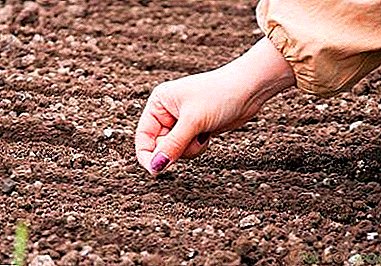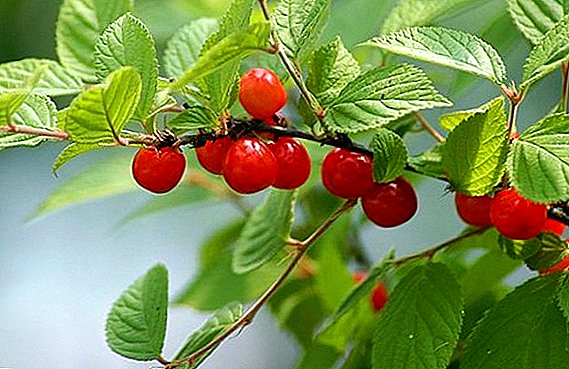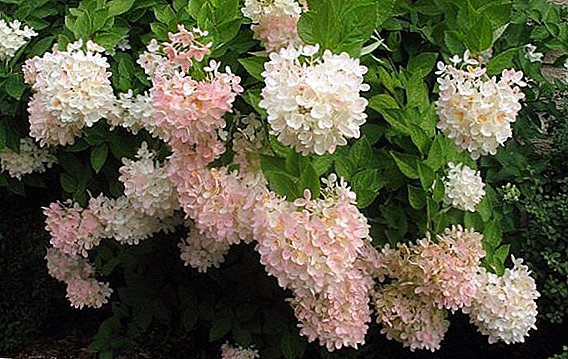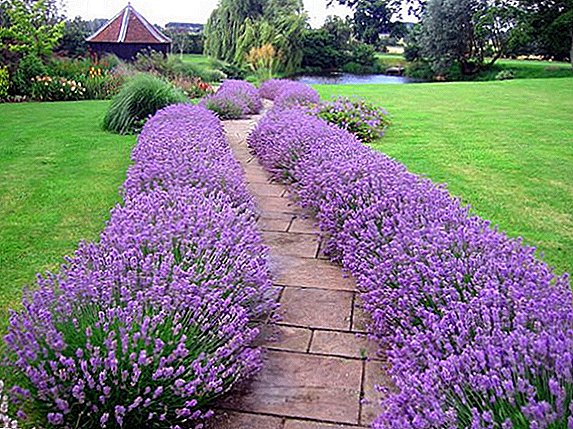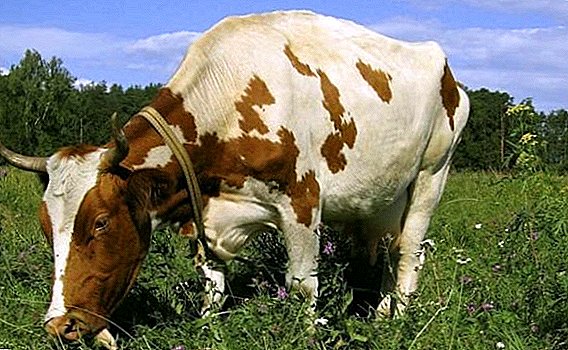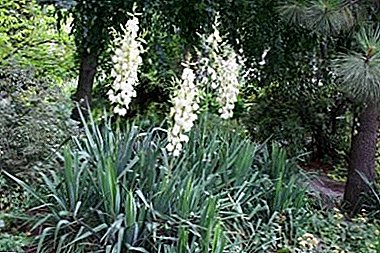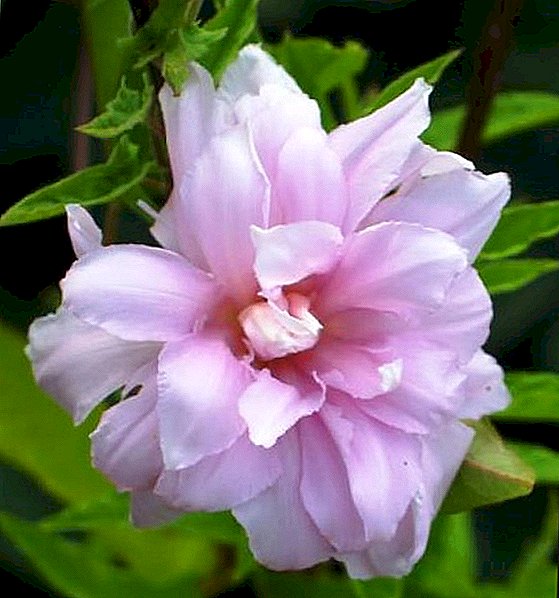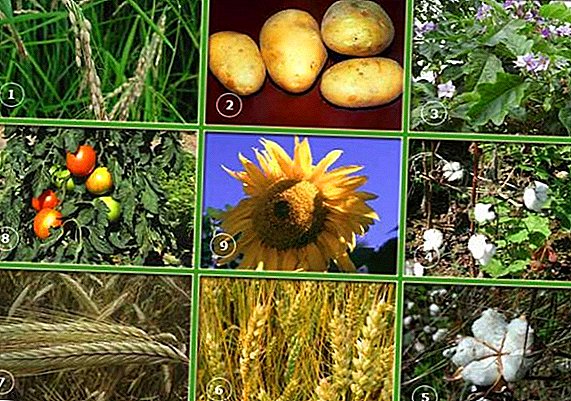 The translation of the term "culture" from the Latin means "to cultivate, process." It was hard and attentive work on the cultivation of wild plants led to the emergence of crops.
The translation of the term "culture" from the Latin means "to cultivate, process." It was hard and attentive work on the cultivation of wild plants led to the emergence of crops.
New cultures in the modern world appear due to biological discoveries and achievements of genetics.
About cultivated plants
The first samples of the cultivation of plants took place in the Stone Age. Primitive man, collecting edible fruits, roots, berries, seeds, etc., drew attention to the possibility of growing the plants he needed near the dwelling.
Throwing seeds in the friable wet earth and having received the first fruits of agriculture, he gradually learned to manage the process of growing cultivated plants.
Timely watering, the destruction of weeds, protection from the sudden destruction of the crop by animals and insects, the selection of the best in quality, taste and size of the plants led to an unconscious artificial selection. After a while, the selection marked the appearance of the first cultivated plants.
And the experience of growing and caring for plants was accumulated and passed on to the next generations. The development of agriculture formed the geographical centers of cultivation of certain crops. The proliferation of cultivated plants contributed to the war, trade, movement and travel.  The majority of cultivated plants have been grown for a long time, but some specimens have been cultivated relatively recently. An example is sugar beet, which began to be cultivated at the beginning of the 19th century, while wheat was grown in the 7th millennium BC.
The majority of cultivated plants have been grown for a long time, but some specimens have been cultivated relatively recently. An example is sugar beet, which began to be cultivated at the beginning of the 19th century, while wheat was grown in the 7th millennium BC.
What is the difference between cultivated plants and wild plants?
The composition of the soil, the presence of precipitation, the level of temperature indicators, the speed of movement of air masses do not depend on the person, but are created by nature and are not subject to regulation (at least at this stage of human development).
Such conditions are called the natural habitat. Wild plants have adapted to the habitat and are subject to natural selection and reproduction.
Video: wild and cultivated plants
Did you know? There is an interesting relative of the tomatoes we are used to — the Porcupine tomato: its leaves are covered with sharp bright spikes containing toxic substances, but the fruits resemble the usual cherry tomatoes in size and color, but you should not taste them, because they are also rich in toxic alkaloids. Fortunately, it is found mainly in Madagascar.
Cultural is in the power of man. Their growth, reproduction, development, harvest, place of growth, planting time depend on people. Without proper attention and care on their part, a good harvest will not be obtained.
What plants are called cultural
Plants grown by man for the performance of their goals, called cultural. Goals can be very different. Among them are the acquisition of food, filling the feed base of livestock, the manufacture of drugs from plant materials and others.  Selection, hybridization, genetic engineering are the main ways of transforming wild plants into cultivated ones. The latter are divided into 11 groups.
Selection, hybridization, genetic engineering are the main ways of transforming wild plants into cultivated ones. The latter are divided into 11 groups.
Decorative
Plants used for landscaping populated areas, decorating gardens, parks, avenues, streets, decorating living rooms and individual buildings are called ornamental. There are more than 10 thousand types of ornamental crops.
There are:
- park trees;
- flower;
- decorative leafy;
- lawn;
- soil protection;
- reclamation plants.
When choosing a decorative culture, take into account the color range of leaves or needles, the size and fragrance of flowers, the duration and timing of flowering, as well as the appearance after flowering. Of particular value are plants that retain the decorative (attractiveness) all year.  Flower ornamental plantings are the most common and varied in application, composition and care.
Flower ornamental plantings are the most common and varied in application, composition and care.
There are a great many kinds of flowers, some of them are bred solely for growing at home (decorative begonias, dieffenbachia, some kinds of violets), others grow beautifully under the open sky. There are species that can delight you both on the windowsill and on the backyard, for example, various roses.
Deciduous and coniferous trees, evergreen trees and shrubs with falling leaves are classified as decorative parks. By height, high, medium and low plants are distinguished.
Among the stunted, creeping and dwarf species (mountain pine, juniper, cotoneaster horizontal), which are most beautiful in stone gardens, alpine hills, and slopes, are valued. No less important is the shape of the crown.
We recommend reading about how to make an alpine slide with your own hands, as well as how to choose plants for an alpine slide.
 Among them are:
Among them are:
- pyramidal (poplar, cypress);
- globular (linden, acacia);
- conical (spruce, fir);
- sprawling (ash, oak, sycamore);
- umbrella-shaped (silky acacia);
- weeping (willow, weeping birch);
- curly (ivy, grapes).
Reservoirs are decorated with plants with a weeping crown shape, and streets, squares, parks - with a conical, spherical, pyramidal. In plantings of a single type, cultures of a sprawling and umbrella-shaped configuration prevail. Climbing plants create vertical ornamental structures.
Important! The seemingly innocuous neighborhood of some fruit and ornamental crops can spoil the harvest. For example, apple trees do not get along with horse chestnut, viburnum, lilac, fir, jasmine and even birch.

Hedges of soil-protective plants serve as protection from the wind, marking the boundaries of land, decoration of the landscape. Land-reclamation stands are able to dry the soil (eucalyptus), delay landslides (pine, seed oak), and fix sandy soil (willow-sheluga). To the best lawn plants, there is a giant fringe, the meadow grass and the red fescue are not inferior.
Cereals and cereals
Plants grown for grain use are cereals. Grain cereals are used in brewing, animal husbandry, cereals, grain industry and other industries.
The first place in the collection of gross product and the number of sown areas belongs to the cultivation of grain crops:
- wheat;
- rice;
- oats;
- barley;
- buckwheat;
- corn.
 Not all grains belong to cereals, for example, there are so-called leguminous crops that are representatives of the legume family, these include soybeans, beans and peas. And the above-mentioned buckwheat comes from the buckwheat family.
Not all grains belong to cereals, for example, there are so-called leguminous crops that are representatives of the legume family, these include soybeans, beans and peas. And the above-mentioned buckwheat comes from the buckwheat family.Did you know? For many centuries, wealthy people have consumed white bread, and the poor - black (rye). However, in the past century, the situation began to change: more and more people who care about their health, began to prefer bread made from dark flour because of its richer mineral composition.
Legumes
Plants grown for agricultural purposes and eating beans (soybeans, beans, peas, lentils) and green pods (peas, beans) are called legumes.
They are conventionally divided into:
- vegetables, cultivated to produce tasty beans and pods (in addition to the above, you can also call chickpeas, mung, Urd, rank);
- fodder, are present in the feed of agricultural cattle (clover, lupine, alfalfa, sweet clover).

Also this group includes peanuts, which are usually referred to as nuts.
For technical purposes, vegetable and fodder legumes are grown to obtain medicinal raw materials, green manurement (enrichment of the soil layer with organic matter and nitrogen by plowing green mass), joint plantings (for example, garden bean and potatoes) to increase the germination rate of both crops, control some pests (for example wireworm). Separate legumes are decorated with decorative compositions (lupine, sweet pea).
Starchy
Plants whose tissues contain a significant proportion of starch are called starchy. Potatoes are the main starch culture of the agricultural zones of the planet. This may include some varieties of corn with a high starch content.
Among other representatives of this species are:
- yam (found mainly in African lands);
- cassava (grown in regions with a warm climate);
- sweet potato or sweet potato (it is also cultivated in the tropics and subtropics).
 Starches are food for people, animal feed, raw material for flour, starch, alcohol, molasses for food and technical purposes.
Starches are food for people, animal feed, raw material for flour, starch, alcohol, molasses for food and technical purposes.Among these cultures, there are endemic species that are not so widespread in world agriculture, but since ancient times they have been cultivated by some countries. These are the tuberiferous cultures of South America: canna, arrowroot, eye, uluko and annu.
Did you know? Potato La Bonnotte, cultivated on the island of Noirmoutier (France), gained fame as the most expensive in the world. A kilogram of the most delicate and delicious product costs about 500 euros.
Sugar-bearing
Plants capable of accumulating sucrose in tissues in significant quantities, and used to produce sugar, are called sugar-bearing. The main crops of this type are sugar cane and sugar beets.  Perennial culture of the bluegrass family - sugar cane - grows in tropical and subtropical zones (India, China, the African continent, Cuba, the Philippine Islands, Central and South America).
Perennial culture of the bluegrass family - sugar cane - grows in tropical and subtropical zones (India, China, the African continent, Cuba, the Philippine Islands, Central and South America).
Plant stems contain 18-20% sugar. The main source of sugar in temperate latitudes is sugar beet. Sugar sargo, sugar and wine palm, sugar maple, watermelon (produce watermelon honey), melons, carob (fruit pulp contains 50% sugar) are also distinguished.
Oilseeds
Plants grown to produce fatty oils are defined as oilseeds.
Among them are:
- rapeseed (cabbage family). The economic role of rape in the twentieth century has increased significantly due to the possibility of obtaining rapeseed biodiesel;
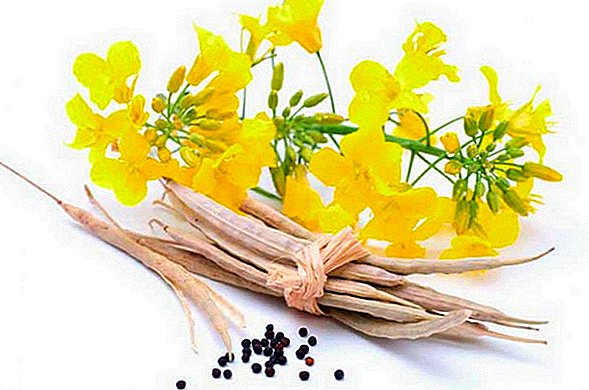
- oil palm (palm family)It serves for the production of high-quality edible and technical oils. West Africa is considered the birthplace of the world's leading oilseed;

- peanuts (legume family). Peanut butter has spread throughout the world from the United States, just like delicious peanut butter, which, of course, includes butter;
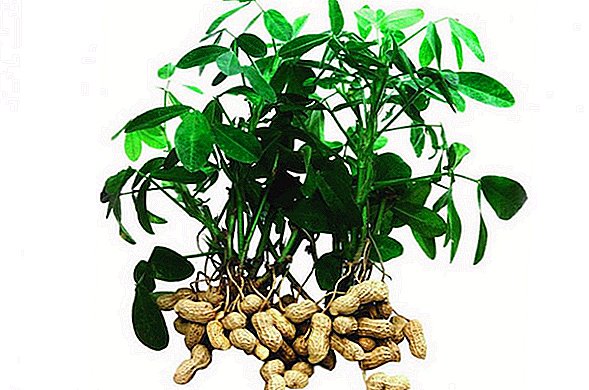
Did you know? Sesame oil since ancient times was valued in the East. It is widely used in ayurvedic practices, and the famous Persian doctor Avicenna had about a hundred recipes of healing remedies based on it.
- Sunflower (Aster family) known for a long time, its cultivation began in North America, occupies 87% of the area of oilseeds;

- European olive (family olive). In the wild form, the tree has not been found for a long time, it has been cultivated to obtain oil from antiquity;

- flax ordinary (flax family) serves to obtain valuable nutritional and medicinal oils;

- soybean (legume family), received the name "miracle plant" for good yield and nutritional composition of the product, known from the III millennium BC. (homeland - East Asia).

It is also useful to mention plants whose oils are used primarily in cosmetics: these are apricot, peach, almond, coconut, grape, avocado.
Fibrous
Plants, the structure of which allows to obtain a fibrous material for the manufacture of fabrics, paper, some household items.
Subdivided by the nature of use on:
- spinning fibers, which allows you to create a variety of fabrics (flax, hemp, cotton);
- rope-rope, consisting of coarse fibers (agave, jute, kenaf, cable, hemp, yucca, nettle);
- paper, the fiber of which is suitable for cardboard and paper products (mulberry, cane, nettle, drock, spruce, pine, birch);
- brushes, allowing to produce household brushes of various applications (palm, agave, sorghum);
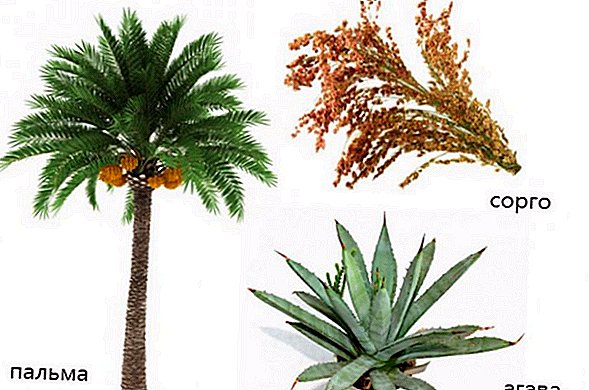
- basket-basket, the fibrous material of which is suitable for wicker products (rogoz, willow, reed);
- stuffing, which light fiber is used in pillows, upholstered furniture, etc. (Ivan-Chai, cotton grass, vatochniki, rogoz, kendyr);
- bast-cleaning, providing fibrous material for washcloths and tow (linden, luffa, chayote, pumpkin).

The most common fiber crop is cotton. It is used in tissues, oil is extracted from seeds, and waste is used as animal feed. China, Uzbekistan, India, USA, Pakistan, Australia, Brazil are the largest suppliers and producers of cotton in the world.
Gourds
Creeping (clinging) plants belonging to the family of pumpkin and grown on the "melon", called melon. The majority of melons have strong roots, elongated clinging stems, bulky leaves and large inflorescences, but there are bushy plants.
Tropical and subtropical states are considered the homeland of melon crops. Use fresh fruits for food and as raw materials in the medical industry, add to the feed ration of farm animals.  Gourd crops include:
Gourd crops include:
- watermelon;
- melon;
- pumpkin;
- zucchini.
Important! Passion for melons can move the sand and stones in the kidneys and gall bladder, which often ends with surgery. Watermelon and melon is desirable to eat once a day and in moderation. If the incised fruit is not eaten within 24 hours, intoxication and flatulence can be obtained, since pathogenic organisms multiply rapidly in the melon residues.
Vegetable
Agricultural plants, the productive organs of which are grown for human consumption and combined by the general concept of "vegetable", are called vegetable. About 120 crops of this type grow on the planet, about 55 of them are grown in all regions of the world.
The main direction of application of vegetable crops is in the quality of food both in its original form and processed (drying, squeezing juice, salting, heat treatment). There are also fodder crops intended for livestock.  Productive body, called a vegetable, defines the following sections of vegetable crops:
Productive body, called a vegetable, defines the following sections of vegetable crops:
- fruit and vegetable crops (tomato, vegetable pepper);
- leafy vegetable crops (cabbage);
- bulbous cultures (onions, garlic);
- root crops (beets, carrots, radish).
Each vegetable culture has a large number of varieties, spread over different continents, cultivated on open ground and in greenhouses.
Fruit plants
Plants cultivated in the production of berries, nuts and fruits are called fruit. All fruit plants are perennial plants; deciduous plants prevail among them, but there are also evergreens. Each culture is defined by the framework of fruitfulness, vitality, requirements for the quality of the soil and environment.  Conventionally, the fruit is divided into climatic areas:
Conventionally, the fruit is divided into climatic areas:
- temperate zone (apple, grape, pear, cherry, plum, quince, currant, gooseberry, raspberry, strawberry, etc.);
- subtropical (citrus, persimmon, fig, pomegranate, peach, etc.);
- tropical (banana, pineapple, mango, coconut palm).
Did you know? Coconuts are interesting because they are able to swim for a long time on the sea, and reaching the coast, take root and grow at a considerable distance from their home. That is why coconut palms can often be found on the coasts of the tropics.
Stimulating
Plants that give stimulating and narcotic substances, called stimulating. The composition of plants includes alkaloids, capable of in small quantities to excite blood cells and nerves.
Among these plants, there are:
- a coffee tree. Drink from its grains affects the nervous system, briefly relieving fatigue, increasing the concentration and performance of a person;

- tea bush, or camellia chinese. Tea has truly unique properties - it can simultaneously calm a person, and relieve drowsiness, and increase efficiency;
- tobacco. May partially suppress the feeling of hunger, thin the blood. It is addictive, which is fraught with various complications;
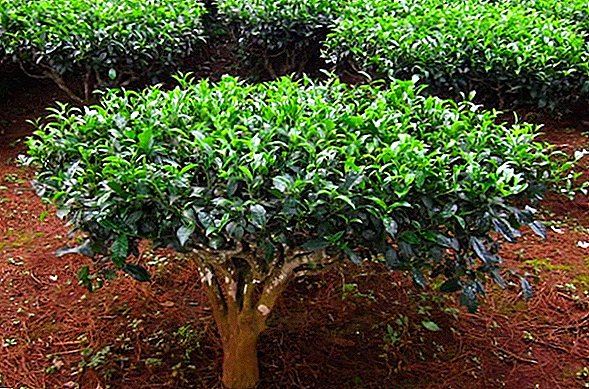
- poppy, a number of alkaloids are mined: morphine, narcotine, papaverine, codeine, thebaine, narcein, etc. It is collected and used in the pharmaceutical industry, as well as in the production of illegal narcotic drugs;

- hemp. Smoking marijuana has a certain intoxicating effect on a person and is prohibited in many states, although in some countries it is allowed for medical reasons, for example, to alleviate the condition of people with oncology.

Why the yield of cultivated plants decreases
We define the main reasons for this phenomenon:
- chemical. Planting crops in the same area leads to depletion of the soil layer, which reduces crop yields. It can be increased by fertilization, liming and soil treatment;
- physical. The soil structure is destroyed by cultivation and root system of the grown seedling, which violates the thermal, air, water regime of the soil, reduces the yield. To restore the structure of the soil will help complete rest of the land;
- biological. Бессменное возделывание культур на одном участке приводит к развитию сорняков и появлению болезней. Сорняки подстраиваются к культурам, что уменьшает их урожай. Thus, the long-term cultivation of cereals increases the risk of soil damage by wireworm. The method of struggle will be a special treatment of the soil and a change of the cultivated crop.
Important! Turn on leguminous crops (crop rotation) legumes - the wireworms do not tolerate them, so they leave the site.
 Climate change may also affect yields if appropriate measures were not taken in time (shelter, soil mulching, etc.).
Climate change may also affect yields if appropriate measures were not taken in time (shelter, soil mulching, etc.).
So, competent alternation of crops, proper use of fertilizers, protection from weeds, pests, diseases, timely "rest" of land, advanced soil treatment technologies will prevent soil depletion and increase yields.
Why plowing improves the living conditions of cultivated plants
Timely plowing contributes to the death of weeds, weakens rivalry between seedlings, helps to maintain a normal level of moisture in the soil facilitates the access of water, oxygen and nutrients to the roots of plants, thereby improving their growing conditions.
We advise you to familiarize yourself with the classification of weeds, as well as learn how to fight and remove weeds from the garden.
What cultivated plants are grown in the mountains
 Despite a certain whimsicality of the mountainous areas, it does not become an obstacle for gardeners and farmers, therefore, depending on the climatic zone in this area, you can meet:
Despite a certain whimsicality of the mountainous areas, it does not become an obstacle for gardeners and farmers, therefore, depending on the climatic zone in this area, you can meet:
- orchards (apricots, peaches, pears, citrus trees);
- vineyards;
- bahchi;
- cereals (barley, millet, corn);
- vegetables (potatoes, wheat, beets);
- tea;
- coffee;
- tobacco.
Cultivated plants bring an excellent harvest and delight us with their appearance only if they are provided with proper care. And for this a person must apply his work and knowledge.

















